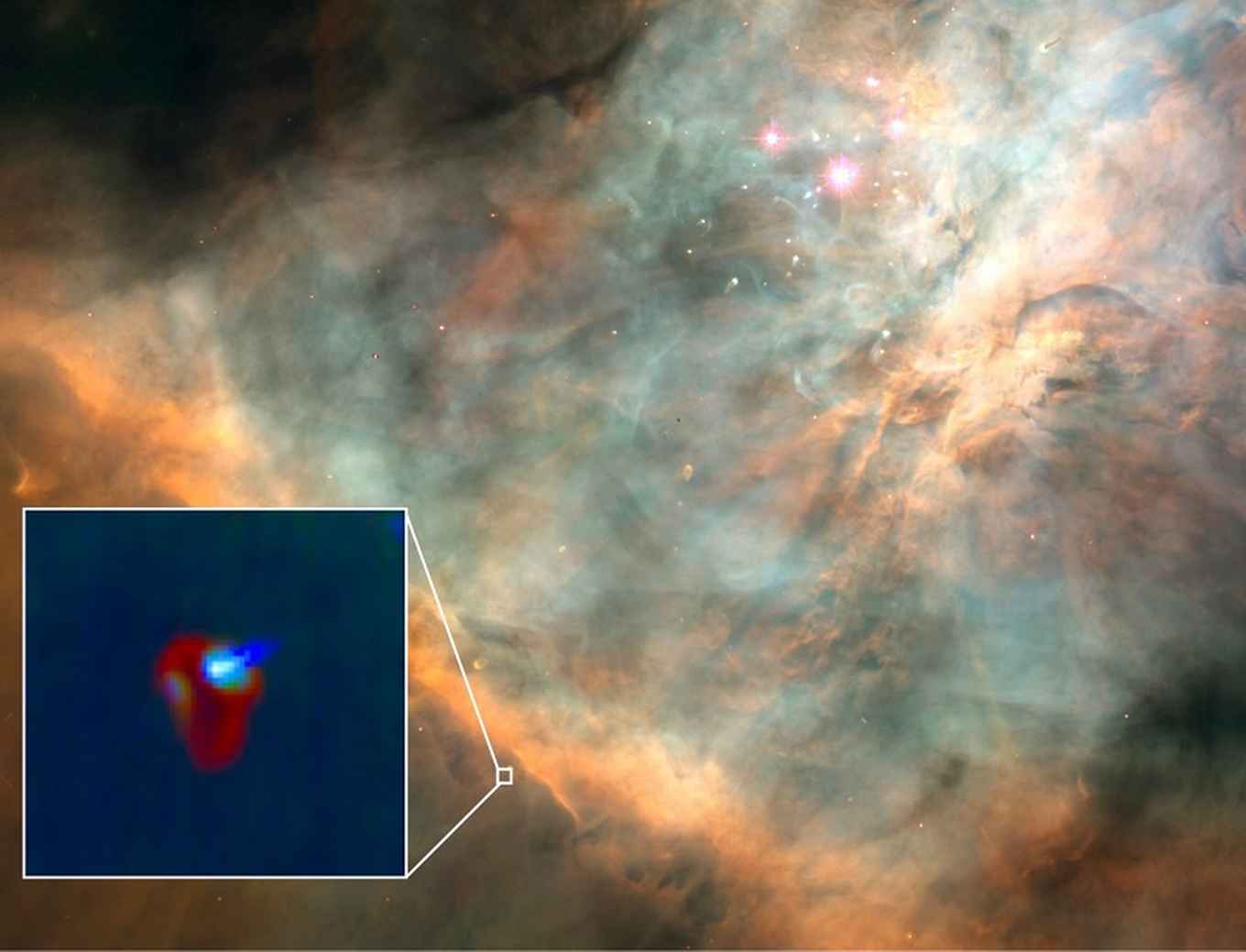Stellar UV radiation prevents formation of Jupiter-like planet
5 March 2024

The team studied the Orion Nebula, a known nursery of stars. The astronomers found that a Jupiter-like planet-in-formation in protoplanetary disk d203-506 could not form because heavy stars in the Trapezium cluster nearby produce intense UV radiation. The UV radiation causes gas to be ejected from the protoplanetary disk. This leaves too little gas to form a planet.
The research was performed in the PDRs4All consortium in which Annemieke Petriginani is one of the initators and science collaborators. The results now published are initial observations by the core team that will serve as the basis for further research by the entire consortium.
Abstract of the paper
Most low-mass stars form in stellar clusters that also contain massive stars, which are sources of far-ultraviolet (FUV) radiation. Theoretical models predict that this FUV radiation produces photodissociation regions (PDRs) on the surfaces of protoplanetary disks around low-mass stars, which affects planet formation within the disks. We report James Webb Space Telescope and Atacama Large Millimeter Array observations of a FUV-irradiated protoplanetary disk in the Orion Nebula. Emission lines are detected from the PDR; modeling their kinematics and excitation allowed us to constrain the physical conditions within the gas. We quantified the mass-loss rate induced by the FUV irradiation and found that it is sufficient to remove gas from the disk in less than a million years. This is rapid enough to affect giant planet formation in the disk.
Paper details
Olivier Berné et al.:A far-ultraviolet–driven photoevaporation flow observed in a protoplanetary disk. Science 383, 988-992 (2024). DOI: 10.1126/science.adh2861
See also
Research group Annemiek Petrignani: Laboratory Astro Chemistry